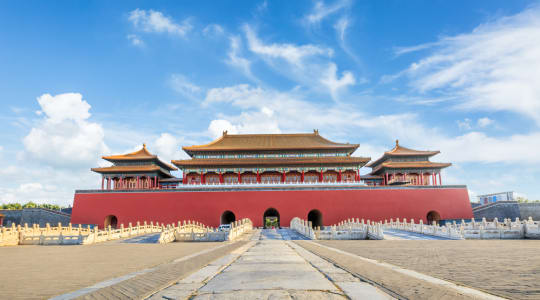The Forbidden City, also known as the Palace Museum, is a palace complex located in the center of Beijing, China. It served as the imperial palace for the Ming and Qing dynasties from the 15th century to the early 20th century. The palace is surrounded by a moat and a high wall and covers an area of over 720,000 square meters, making it one of the largest palace complexes in the world. The Forbidden City is composed of 980 buildings, including palaces, halls, towers, and pavilions, all of which are richly decorated with colorful murals, intricate carvings, and gilded roofs.
The Forbidden City is an important cultural heritage site and is listed as a UNESCO World Heritage Site. It is one of the most popular tourist attractions in Beijing and draws millions of visitors each year to see its magnificent architecture, rich history, and cultural significance. Visitors can tour the palace and its numerous halls, gardens, and temples to learn about the history of the imperial court and see the grandeur of the Ming and Qing dynasties.
In recent years, efforts have been made to restore the Forbidden City to its former glory, and many of its buildings have been renovated and restored to their original appearance. The Forbidden City is an important symbol of Chinese culture and history and continues to be a major tourist destination for visitors from around the world.
Explore Near Forbidden City
Discover 5 attractions, 5 cities, and 2 airports within 75km. Perfect for planning day trips, finding connecting flights, or discovering new destinations to explore during your visit.
Nearby Attractions & Places to Visit
5 destinations within 1.4km - 5.5km from your location





Nearby Cities Worth Exploring
5 destinations within 1.1km - 29.7km from your location
Airports Near Forbidden City
2 destinations within 24.6km - 45.2km from your location
Cross-Border Adventures Near Forbidden City
Discover cross-border adventures near Forbidden City. Explore neighboring countries with similar attractions and extend your travel experience across borders.








And 8 more neighboring countries

